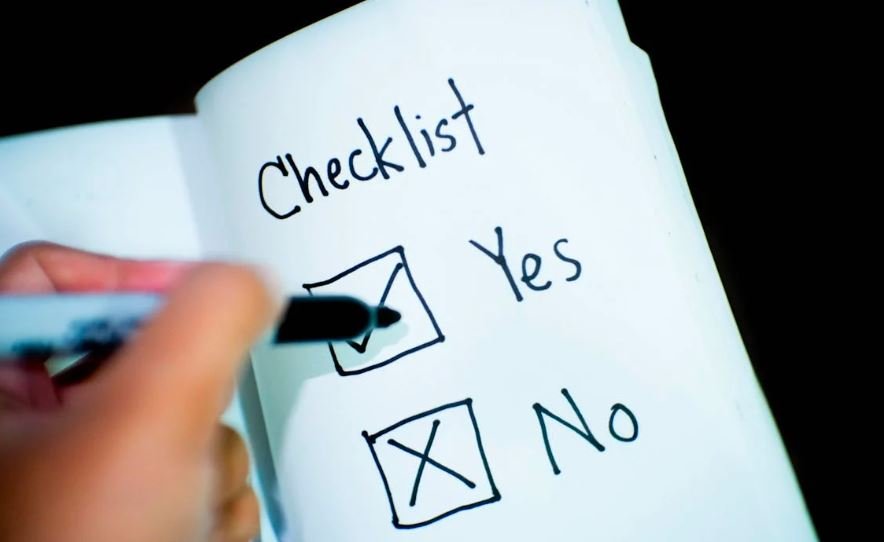Hiring Mistakes Costing You? The New Hire Checklist That Fixes Everything
New Hire Checklist in the onboarding process is the cornerstone of a positive employee experience. It sets the tone for a new hire’s integration into the company, fosters engagement, and increases the likelihood of them staying with the organization. Here we will provide a comprehensive new hire onboarding checklist, complete with an onboarding plan template, to ensure a smooth and successful transition for your latest additions.
Pre-Boarding: Setting Expectations
The onboarding process ideally begins even before the first day. By taking proactive steps, you can create a welcoming environment and alleviate first-day jitters for your new hires.
- Welcome Email: Send a warm welcome email with essential details like start date, time, location, dress code, and a point of contact for any Fulltime or C2C JOBS. This email can also include company information and links to relevant resources.
- Onboarding Checklist Template: Provide a new employee onboarding checklist (which you can customize based on the role) outlining the steps involved in the onboarding process. This helps the new hire feel prepared and understand what to expect.
- Pre-work: Depending on the role, consider assigning pre-work materials such as company policy documents, training modules, or industry-specific information.
- Equipment Setup: Ensure all necessary equipment (computer, phone, etc.) is set up and ready to go on the first day.
- New Hire Announcement: Generate excitement within the team by sending a company-wide announcement introducing the new hire.
New hire onboarding checklist with responsibilities
| # | New Hire Checklist | Responsibilities |
|---|---|---|
| 1 | Welcome Message | HR sends welcome email introducing the new hire to the team and company culture. |
| 2 | Paperwork Completion | New hire fills out necessary paperwork, including tax forms, NDAs, and employment contracts. |
| 3 | Company Orientation | HR conducts a company orientation session, covering company history, mission, values, and policies. |
| 4 | Office Tour | Assigned employee or manager gives a tour of the office, introducing key areas and facilities. |
| 5 | Introduction to Team | New hire meets with team members and is introduced to their roles and responsibilities. |
| 6 | Equipment Setup | IT department sets up necessary equipment, such as computers, phones, and software accounts. |
| 7 | Training Sessions | HR or department heads conduct training sessions on company tools, processes, and job-specific skills. |
| 8 | Benefits Enrollment | HR assists new hire in enrolling for company benefits, such as healthcare and retirement plans. |
| 9 | Performance Expectations | Manager discusses performance expectations, goals, and KPIs for the new hire’s role. |
| 10 | Role-specific Training | Department heads or mentors provide role-specific training and shadowing opportunities. |
| 11 | HR Policies Review | HR reviews company policies, including attendance, leave, and conduct policies. |
| 12 | IT Security Training | IT conducts training on cybersecurity jobs best practices and company IT policies. |
| 13 | Introduction to Tools | New hire is provided with access to necessary tools and software used in their role. |
| 14 | Performance Feedback | Manager schedules regular check-ins to provide feedback and support the new hire’s development. |
| 15 | Buddy System Introduction | Assigning a buddy or mentor to help the new hire acclimate to the company culture and workflow. |
| 16 | Goal Setting | Manager and new hire collaboratively set short-term and long-term goals for professional development. |
| 17 | Compliance Training | HR conducts training on legal and compliance requirements relevant to the new hire’s role. |
| 18 | Company Culture Immersion | Encouraging participation in company events, social gatherings, and team-building activities. |
| 19 | Feedback Mechanisms | Establishing channels for the new hire to provide feedback on their onboarding experience and suggest improvements. |
| 20 | Follow-up Support | HR and managers provide ongoing support and guidance to ensure the new hire’s success in their role. |
This checklist covers various aspects of the organizational onboarding process, from administrative jobs tasks to cultural integration and professional development, ensuring a comprehensive and effective onboarding experience for new hires.

First Day & First Week: Making a Great First Impression
The first day and week are crucial for setting a positive tone for the new hire’s experience. Here’s what to include in your onboarding checklist for this period:
- Warm Welcome: Have someone greet the new hire at the door and make introductions to key team members.
- Paperwork Completion: Facilitate the completion of necessary HR paperwork for that particular C2C requirements, including tax forms and benefits enrollment.
- Workspace Setup: Show the new hire their workspace, explain any office procedures, and ensure they have everything they need to get started.
- Company Orientation: Provide an overview of the company’s history, mission, values, and structure. Include information about products, services, and key competitors.
- Team Introductions: New Hire Checklist and Schedule introductions with team members, including direct reports, managers, and colleagues from other departments.
- IT Setup: Assist them in setting up their computer accounts, emails, and access to any necessary software or applications.
- Training: Begin role-specific training, which may include product knowledge, industry best practices, or company-specific software.
- Team Lunch: Organize a team lunch or social gathering to help the new hire feel welcomed and build rapport with team members.
- Feedback Session: Schedule a brief feedback session to address any questions or concerns the new hire might have.

Weeks 2-4: Deepening Knowledge & Building Skills
As the new hire settles in, continue their onboarding with a focus on deepening their knowledge and building essential skills.
- Mentorship: Assign a mentor to provide ongoing guidance and support. The mentor can answer questions, offer C2C career advice, and help the new hire navigate the company culture.
- Continued Training: Deliver ongoing role-specific training, including hands-on experience and shadowing opportunities with senior colleagues.
- Performance Goals: Work with the new hire to establish clear and measurable performance goals for the first 30, 60, and 90 days.
- Project Assignments: Begin assigning small projects to allow the new hire to apply their learning and demonstrate their skills.
- Performance Feedback: Provide regular feedback on their performance to help them identify areas of strength and areas for improvement.
- Socialization Activities: Encourage participation in social events and team-building activities to foster a sense of belonging.
Beyond the Initial Weeks: Ongoing Support & Development
Onboarding is a continuous process that extends beyond the initial weeks. Here are some additional steps to ensure long-term success:
- Regular Check-Ins: Schedule regular check-ins with the new hire to discuss their progress, address any concerns, and answer questions.
- Continued Learning Opportunities: Provide New Hire Checklist and ongoing learning and development opportunities, such as access to online courses, conferences, or workshops.
- Performance Reviews: Conduct regular performance reviews to track progress towards goals and provide ongoing feedback.
- Career Development Discussions: Discuss the new hire’s career aspirations and identify potential pathways for growth within the company.
Benefits of a Comprehensive Onboarding Checklist
By implementing a well-defined onboarding checklist with an onboarding plan template, you can achieve numerous benefits:
- Increased Employee Retention: A structured onboarding process leads to a more positive new-hire
- Role-Specific Focus: While the core elements of onboarding remain consistent, tailor specific training modules, project assignments, and performance goals to the new hire’s specific role and responsibilities.
- Remote Onboarding: For remote hires, invest in video conferencing tools and online collaboration platforms to facilitate communication and engagement. Consider sending a welcome package with company swag and essential office supplies.
Fostering a Positive Company Culture:
- Company Culture Immersion: Integrate activities that showcase your company culture. This could include participation in volunteer events, team outings, or casual social gatherings.
- Diversity & Inclusion: Emphasize the company’s commitment to diversity and inclusion throughout the onboarding process. This can involve providing information on employee resource groups (ERGs) and creating a welcoming environment for all new hires.
Technology & Tools:
- Knowledge Management System: Provide access to a knowledge management system with essential company documents, Corp to corp policies, procedures, and FAQs. This empowers new hires to find answers independently.
- Collaboration Tools: Equip the new hire with the necessary collaboration tools to facilitate communication and teamwork, such as project management software or instant messaging platforms.
Feedback & Communication:
- Two-Way Communication: Encourage open communication by providing multiple channels for feedback, such as one-on-one meetings, anonymous surveys, or suggestion boxes.
- Regular Feedback Loops: Establish regular feedback loops to solicit feedback from the new hire on the onboarding process itself. This allows you to continuously improve and refine your onboarding strategy.
Additional Considerations:
- Benefits Enrollment Support: Dedicate time to ensure the new hire understands their benefits package and completes necessary enrollment forms.
- Compliance Training: Include mandatory compliance training on topics like sexual harassment prevention, data security, and anti-discrimination policies.
- Emergency Preparedness: Familiarize the new hire with emergency procedures and evacuation routes for the workplace.
Onboarding Plan Template:
Pre-Boarding (1-2 weeks before start date):
- Welcome Email with start date details
- New Hire Onboarding Checklist
- Pre-work materials (optional)
- Equipment setup
- New Hire Announcement
First Day & First Week:
- Warm Welcome & Introductions
- Paperwork Completion
- Workspace Setup
- Company Orientation
- Team Introductions
- IT Setup & Software Access
- Training (role-specific)
- Team Lunch/Social Gathering
- Feedback Session
Weeks 2-4:
- Mentorship Assignment
- Continued Training
- Performance Goal Setting
- Project Assignments
- Performance Feedback
- Socialization Activities
Beyond the Initial Weeks:
- Regular Check-Ins
- Continued Learning & Development
- Performance Reviews
- Career Development Discussions
Remember, this is a template, and you can adapt it to fit the specific needs of your company and each new hire.
By implementing a comprehensive onboarding New Hire Checklist and well-structured new hire onboarding checklist for managers plan template, you can empower your new hires to integrate seamlessly into your organization, foster a sense of belonging, and set them on the path for long-term success. This investment in your new employees will ultimately yield a more productive, engaged, and satisfied workforce.
Read more:
top 10 staffing companies in usa
More Corp to corp hotlist
Join linkedin 42000+ US Active recruiters Network
Join No.1 Telegram channel for daily US JOBS and Updated HOTLIST